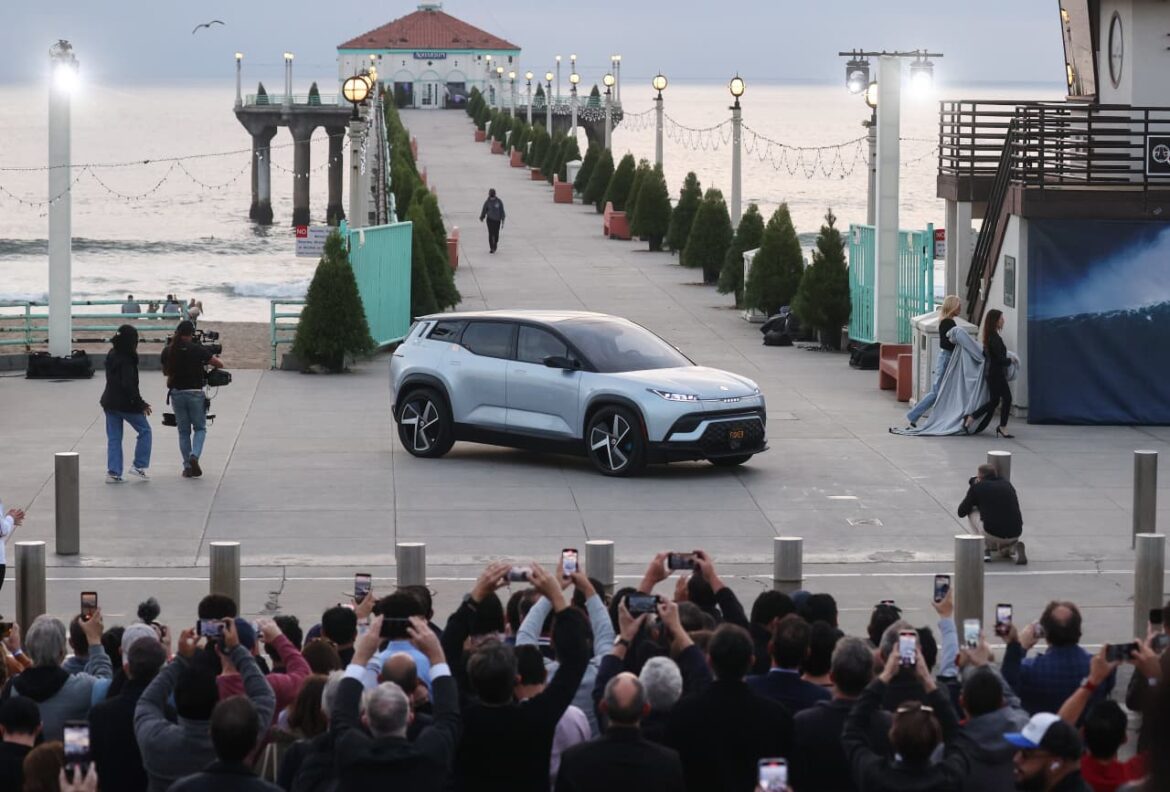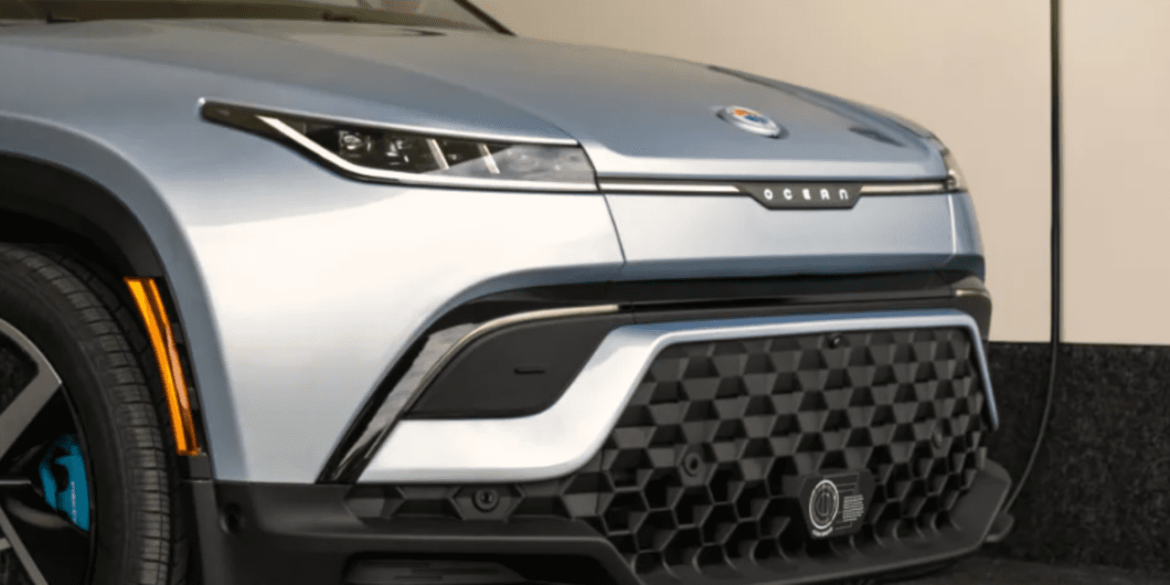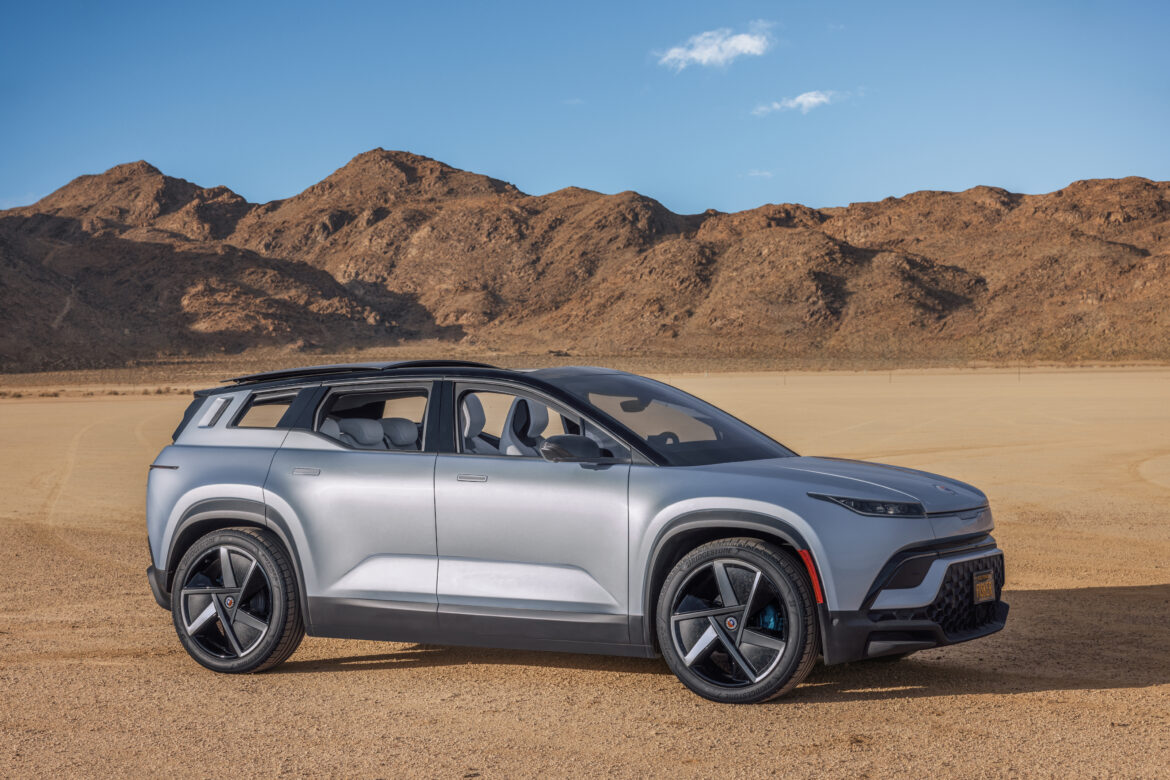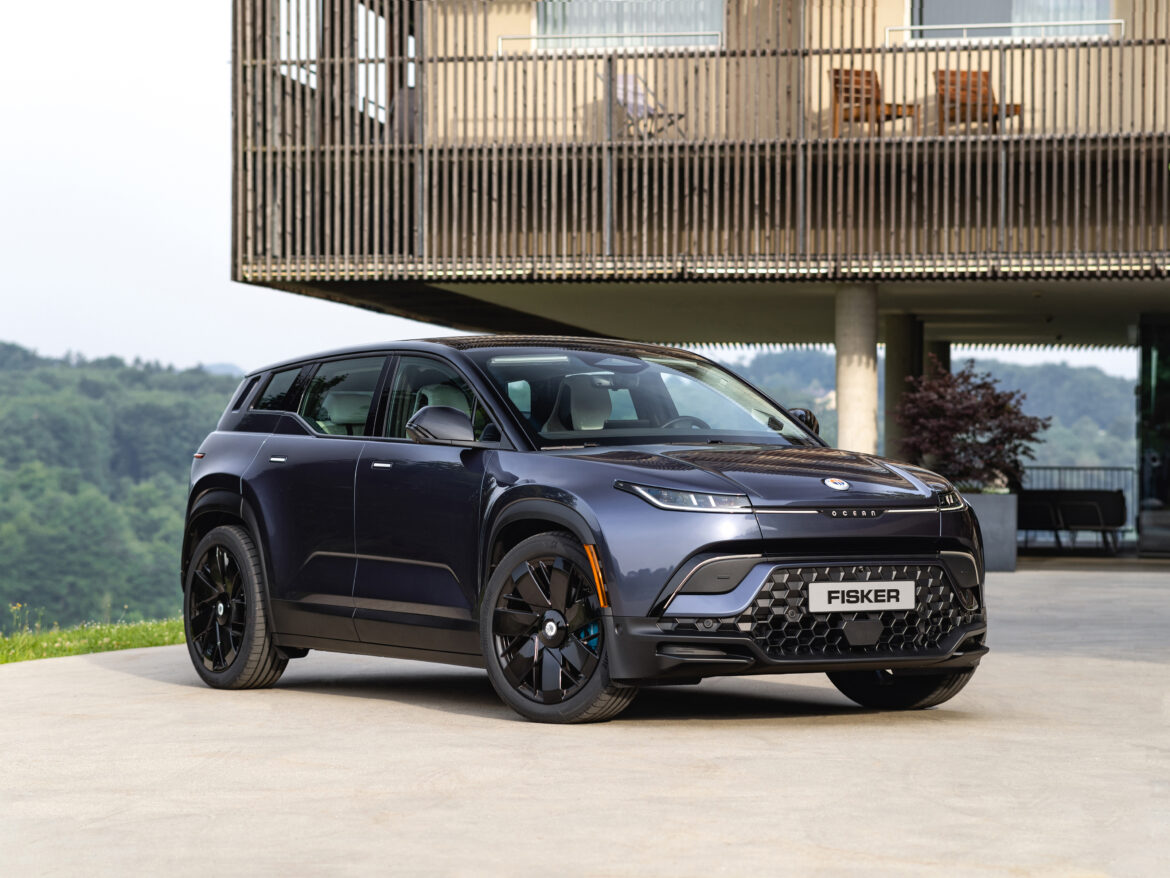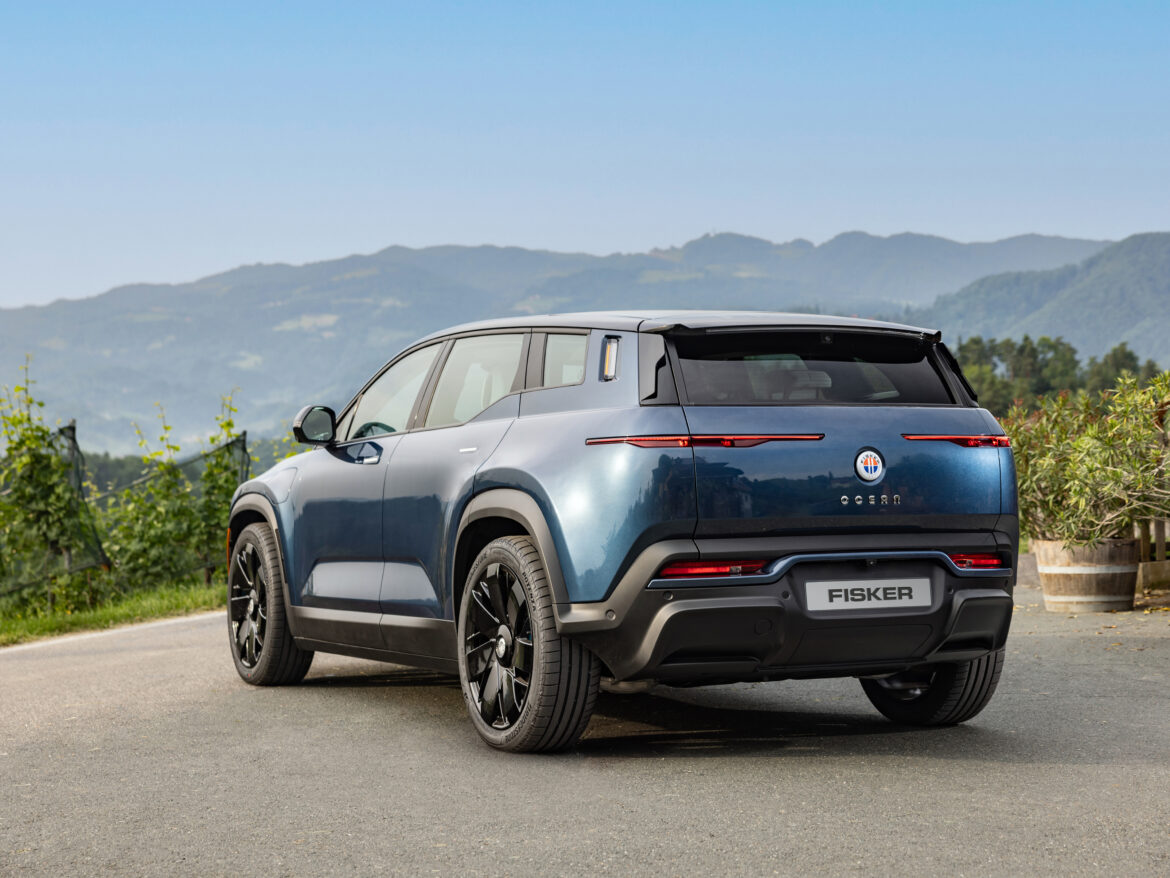
Fisker tries to ward off bankruptcy talk, says it is still engaging with another carmaker to survive.
Source link
Fisker
Fool.com contributor Parkev Tatevosian reviews Fisker‘s (FSR -9.12%) challenges in gaining market share in the EV industry.
*Stock prices used were the afternoon prices of March 8, 2024. The video was published on March 10, 2024.
Parkev Tatevosian, CFA has no position in any of the stocks mentioned. The Motley Fool has no position in any of the stocks mentioned. The Motley Fool has a disclosure policy.
Parkev Tatevosian is an affiliate of The Motley Fool and may be compensated for promoting its services. If you choose to subscribe through his link, he will earn some extra money that supports his channel. His opinions remain his own and are unaffected by The Motley Fool.
Fisker seeks deal with another carmaker to remain afloat, shares plunge

Fisker Inc. shares fell 37% in extended trading Thursday after the EV maker said it was brokering a deal with an unnamed “large” carmaker as it seeks to remain in business, adding that there would be “substantial doubt” about its ability to do just so without a capital injection.
The deal could include an investment in Fisker
FSR,
a joint development of one or more electric-vehicle platforms and North American manufacturing, Fisker said.
Fisker has been dubbed the “Apple of autos,” having inked deals with manufacturers to produce its EVs and choosing to focus on the design side of the business.
The company also said that its current resources are insufficient to meet its needs over the next 12 months, and that it will need to seek additional equity or debt financing.
If there’s no financing or if financing terms are “less desirable” than expected, the company “may be forced to decrease its planned level of investment in product development, scale back its operations including further headcount reductions, and reduce production of the Fisker Ocean, which could have an adverse impact on the company’s business and financial prospects,” the EV maker said.
“As a result, the company expects to conclude there is substantial doubt about its ability to continue as a going concern when its annual financial statements for the year ended December 31, 2023, are filed with the SEC,” it warned.
Fisker said it would cut about 15% of its workforce, and that the reductions are mostly related to the change in its sales strategy from a direct-to-consumer model to a dealer-partner model. It was not immediately clear how many employees Fisker currently has, and the company did not return a request for information.
The company became a public through a merger with a blank-check company in July 2020.
It had an earlier life as privately held Fisker Automotive, which went bankrupt in 2013 after six years in business. The company’s assets were acquired by a Chinese auto-parts maker that also owned the company supplying batteries to Fisker, A123 Systems.
A123 Systems went bankrupt as well, hastening the demise of the old Fisker. The founder of Fisker Automotive, Danish designer Henrik Fisker, had resigned from the company’s amid board infighting just before the bankruptcy, but he retained some brand rights and went on to found Fisker Inc.
Last year was “challenging” for Fisker, including delays with suppliers and other issues that prevented the EV maker from delivering its Ocean SUVs “as quickly as we had expected,” Henrik Fisker said in the company’s statement.
“We also encountered unexpected headwinds in our efforts to establish a direct-to-consumer sales model in both North America and Europe at the same time,” plus “unanticipated challenges” such as rising interest rates and a tight labor market, he said.
Besides the layoffs, Fisker is also streamlining operations, including reducing its physical footprint and overall expenses.
Fisker reported fourth-quarter sales of $200 million, well bellow FactSet consensus for sales of $327.7 million for the quarter.
The EV maker lost $463.6 million, or $1.23 a share, in the quarter, compared with a loss of 34 cents a share in the fourth quarter of 2023. The analysts surveyed by FactSet expected a GAAP loss of 23 cents a share.
Fisker shares have lost 90% in the past 12 months, contrasting with gains of around 28% for the S&P 500 index
SPX.
Fisker (FSR -7.50%) dropped to as low as $1.10 per share today. That’s an all-time low mark for the stock of the electric vehicle (EV) start-up. The move lower is occurring despite the major U.S. stock indexes all moving higher today.
As of 3:10 p.m. ET, Fisker stock was still at that low mark, down by 8.3%. While no major news came from the company, a Securities and Exchange Commission (SEC) filing may be the culprit.
Warning investors about changes
Fisker has released several items of news to start 2024. They included the hiring of a new chief accounting officer after two previous changes to that position since October.
In the same SEC report, filed today, where it provided more details behind that hiring, the company also noted previously announced changes to its distribution model. But that portion also included some warnings and potential headwinds that weren’t included in the Jan. 4 press release.
Transition may cost some sales
While the transition from a direct-to-consumer sales model to one more like the dealership strategy used by legacy automakers might solve one problem, it could also cause another. According to Fisker there are more unknowns that at this point could make it difficult to evaluate its “business, operating results and future prospects.”
But it could also cost the company crucial sales. The entire reason for the change was to overcome difficulty in attracting customers and getting vehicles to them. Fisker noted that there may be consumers who already made a deposit through the direct sales model who may decide not to move forward with the purchase using a dealership.
It also noted licensing and permits may still need to be obtained to use a dealer model. Fisker stated, “Compliance with and changes to state dealer franchise laws could adversely affect our ability to successfully move to a dealership sales model.”
The notice of a potentially “material adverse effect” on a business isn’t unusual in some SEC filings. But these may be specific issues that investors hadn’t thought through when Fisker announced these plans last week. And it comes at a critical time when the company needs to see higher sales volume sooner rather than later. That helps explain why the stock hit an all-time low today.
Howard Smith has no position in any of the stocks mentioned. The Motley Fool has no position in any of the stocks mentioned. The Motley Fool has a disclosure policy.
Electric vehicle startup Fisker (FSR -8.33%) had its fair share of challenges to overcome during 2023, and that might be putting it lightly. It slashed production estimates a number of times, had a disappointing third-quarter earnings report, and its chief accounting officer resigned.
That said, investors can rejoice that the company has made plans that could solve its biggest headache: deliveries.
What happened?
“We have not been able to follow through with deliveries fast enough,” CEO Henrik Fisker said during the company’s recent third-quarter earnings call. “People have paid and are waiting for their cars, and some of them are getting really annoyed.”
For a young electric vehicle (EV) company just getting started and facing a cash crunch, having trouble connecting the dots between accelerating production and making deliveries to buyers is a big deal — and bad news. Fortunately, Fisker recorded a 300% increase in deliveries from the third quarter to the fourth quarter, and that could improve even more after the company announced a new strategy for its delivery infrastructure.
Welcome, new dealers
Fisker announced it’s currently developing an innovative dealer partnership model in North America, and also shifting to a hybrid model in Europe that combines direct sales and dealer arrangements.
More specifically, Fisker plans to have roughly 100 dealer locations across Europe and North America, and expects to send its first Fisker Ocean SUVs to new dealers by the end of the first quarter. Management believes this will enable Fisker to expand its sales and deliveries at a faster pace while still hewing to its asset-light strategy.
The new dealer partnership plan is intended to benefit both sides of the transaction: Customers will get more convenient locations at which they can buy Fisker vehicles, and the dealer partners will get larger territories to market into, giving them pricing control with less competition.
Fisker has been in discussions with a number of dealers since late November, and the new sales strategy should combine with its test-drive network to boost sales and delivery infrastructure. Fisker delivered roughly 4,700 vehicles in 2023 and produced 10,142 Oceans, meaning there’s plenty of room for it to grow simply by improving its delivery-to-production ratio. For comparison, rival EV maker Rivian‘s gap between production and deliveries was roughly 5% during the third quarter.
Is the stock finally a buy?
To put it bluntly, there’s a lot of risk that comes with investing in Fisker. The company slashed its production estimates multiple times during 2023, admitting that part of the decision was to free up $300 million in working capital during a cash crunch. Fisker’s net cash used in operating activities totaled $308.2 million during the third quarter, and its cash and cash equivalents checked in at $625.4 million at the end of that period.
That said, this could well prove to be rock bottom for the young EV company if it can build out its delivery infrastructure and begin generating higher revenues. There’s little doubt that it will continue to book losses in the near term, and it’s a speculative investment. As such, investors would be wise to limit their Fisker positions to a small percentage of their portfolio’s value, and buy in only if they believe the third quarter was truly rock bottom for the EV maker.
Daniel Miller has no position in any of the stocks mentioned. The Motley Fool has no position in any of the stocks mentioned. The Motley Fool has a disclosure policy.
Fisker Just Got Crushed, but There’s 1 Reason to Be Optimistic About the EV Stock
It’s taken years for Fisker (FSR -6.94%) to reach a material production level, but the big moment is finally here as the company just reported meaningful revenue for the first time in its history.
In its third-quarter earnings report, Fisker reported production of 4,725 vehicles and delivered 1,097 vehicles. The gap between production and deliveries was mainly due to logistics challenges, though management said it had improved its logistics network and delivered more than 1,200 vehicles in October.
Despite achieving the milestone of material deliveries and revenue, Fisker stock still fell double digits on the earnings report after hours on Monday. It reported revenue of $71.8 million, which was well short of the analyst consensus of $109 million, and its per-share loss of $0.27 was worse than expectations of a loss of $0.19. On a generally accepted accounting principles (GAAP) basis, the company reported a $91 million net loss. It also cut its production target for the year from at least 20,000 vehicles to 13,000-17,000.
Like its EV start-up peers including Lucid (LCID 0.69%) and Rivian (RIVN -1.61%), Fisker still faces a lot of uphill challenges, especially as there are signs that overall EV demand is starting to weaken and as the industry has become more price-competitive. That’s led Fisker to cut the price of its high-end Ocean Extreme SUV, though it raised prices modestly on its two lower-cost trims.
The company continues to burn cash with a free cash flow loss of $339 million in the quarter, and it finished the quarter with $527.4 million in cash and cash equivalents. It also has the ability to raise another $550 million as part of a recent sale of convertible notes.
Fisker stock has steadily declined over the last couple of years and was trading at an all-time low after-hours as the company has faced production delays and the hype around electric vehicles has seemed to fade. However, there was one particular bright spot in the earnings report that shouldn’t get lost in the sell-off.

Image source: Fisker.
The good news for Fisker
Rivian, Lucid, and Fisker are all ramping up production and are deeply unprofitable, but Fisker has a surprising edge over its start-up peers.
All three of these companies are reporting negative gross profit, meaning they are losing money on the sale of each vehicle even before they account for overhead costs. However, Fisker has the lowest negative gross profit of these three companies, both on a per-vehicle basis and on a margin basis, meaning as a percentage of revenue. That is partly because the company outsources its manufacturing to Magna International, but it gives the company some downside protection from the steep start-up costs.
In the third quarter, the company reported a gross profit loss of $12.1 million on $71.8 million in revenue or a gross margin of negative 17%. On a per-vehicle basis, the company had a negative gross profit of $11,000. By comparison, Rivian, which is the largest of these three start-ups, reported a negative gross profit of $30,600 per vehicle in the quarter and a negative gross margin of 36%. Lucid, meanwhile, had a negative gross margin of 140%, and a gross loss of $228,000 per vehicle delivered in the quarter.
Those numbers seem to indicate that Fisker is closer than either of its two start-up peers to making a profit. Reaching gross profitability is a crucial milestone for all three of these companies because it shows they can adequately fund their own manufacturing, though Fisker has taken a different approach from Rivian and Lucid, which have both built their own production facilities.
Overhead costs like selling, general and administrative expenses and research and development tend to be more flexible than costs of goods sold, and companies can slash marketing or R&D spending to save money when they need to. Cutting costs on manufacturing is more difficult.
While Fisker won’t enjoy the same scale benefits as Rivian and Lucid, its decision to outsource manufacturing could help it beat those competitors to gross and even overall profitability over the long term.
What it means for investors
EV stocks have come under pressure in recent months on signs of waning demand in the industry, but Fisker’s expected production ramp and the relatively solid gross margin numbers should give investors some encouragement.
While the stock still has a lot of challenges to overcome to be successful, it’s a mistake to write off Fisker now. Keep an eye on the gross profit figure in the coming quarters. If it can improve that number and continue to grow production, the company could be well on its way to profitability.

